
Isopoda is an order of crustaceans that includes woodlice and their relatives. Isopods live in the sea, in fresh water, or on land. All have rigid, segmented exoskeletons, two pairs of antennae, seven pairs of jointed limbs on the thorax, and five pairs of branching appendages on the abdomen that are used in respiration. Females brood their young in a pouch under their thorax.
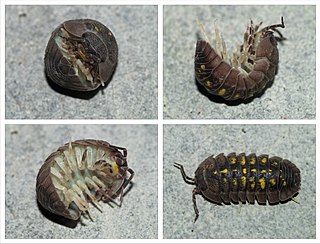
Armadillidiidae is a family of woodlice, a terrestrial crustacean group in the order Isopoda. Unlike members of other woodlice families, members of this family can roll into a ball, an ability they share with the outwardly similar but unrelated pill millipedes and other animals. This ability gives woodlice in this family their common names of pill bugs or roly polies. Other common names include slaters,potato bugs, doodle bugs and cheeselogs. Most species are native to the Mediterranean Basin, while a few species have wider European distributions. The best-known species, Armadillidium vulgare, was introduced to New England in the early 19th century and has become widespread throughout North America.

A woodlouse is an isopod crustacean from the monophyletic suborder Oniscidea within the order Isopoda. They get their name from often being found in old wood.

Gustav Henrik Andreas Budde-Lund was a Danish invertebrate zoologist. In 1868, he co-founded the Entomologisk Forening, alongside Rasmus William Traugott Schlick, Carl August Møller, Andreas Haas and Ivar Frederik Christian Ammitzbøll. He was a student of entomologist J. C. Schiødte, and became a leading authority on terrestrial isopods, describing over 70 genera and around 500 species. He married in 1875 and in 1885 produced his seminal work Crustacea Isopoda terrestria. The woodlouse genus Buddelundiella was named in Budde-Lund's honour by Filippo Silvestri in 1897.

Hemilepistus reaumuri is a species of woodlouse that lives in and around the deserts of North Africa and the Middle East, "the driest habitat conquered by any species of crustacean". It reaches a length of 22 mm (0.87 in) and a width of up to 12 mm (0.47 in), and has seven pairs of legs which hold its body unusually high off the ground. The species was described in the Description de l'Égypte after the French Campaign in Egypt and Syria of 1798–1801, but was first formally named by Henri Milne-Edwards in 1840 as Porcellio reaumuri. It reached its current scientific name in 1930 after the former subgenus Hemilepistus was raised to the rank of genus.
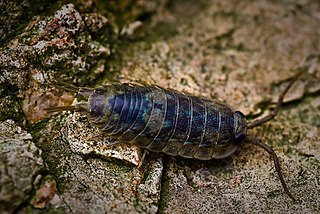
Ligia is a genus of isopods, commonly known as rock lice or sea slaters. Most Ligia species live in tidal zone cliffs and rocky beaches, but there are several fully terrestrial species occur in high-humidity environments.
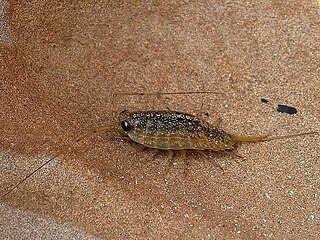
Ligia exotica, also called sea roach or wharf roach, is a woodlouse-like isopod, a sea slater in the family Ligiidae. It is found in various parts of the world living on rocky coasts and harbour walls just above high water mark.
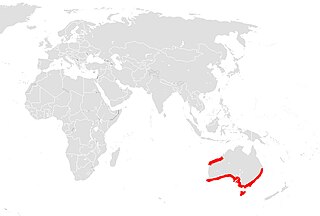
Ligia australiensis, the Australian marine slater, is a woodlouse in the family Ligiidae.
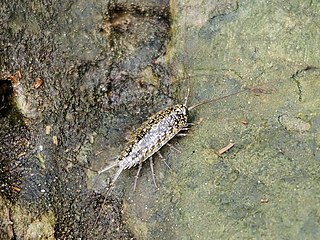
Ligia baudiniana is a woodlouse in the family Ligiidae. It has a coarsely granular surface and large eyes that are very close together.
Ligia natalensis is a woodlouse-like isopod in the family Ligiidae.

Ligia dilatata is a woodlouse in the family Ligiidae.
Ligia cajennensis is a woodlouse in the family Ligiidae. It has a relatively narrow body with a rough, grainy texture. It's a dark yellow/rust color, with lighter antennae and legs. Its eyes are brownish black.
Ligia cursor is a woodlouse in the family Ligiidae.
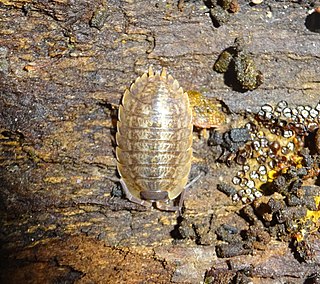
Porcellio montanus is a species of woodlouse in the genus Porcellio belonging to the family Porcellionidae that can be found in Czech Republic, France, Italy and Switzerland. Only one subspecies have been recorded, Porcellio montanus alpivagusVerhoeff, 1928.
Porcellio albinus is a species of woodlouse in the genus Porcellio belonging to the family Porcellionidae that can be found in North Africa.
Porcellio obsoletus is a species of woodlouse in the genus Porcellio belonging to the family Porcellionidae that can be found on islands like Crete, Cyclades, Cyprus, Dodecanese, Malta, North Aegean, and Sicily. It can also be found in such European countries as Albania, Croatia, Greece, Italy, Ukraine, and European part of Turkey.

Armadillidae is a family of woodlice, comprising around 80 genera and 700 species. It is the largest family of Oniscidea, and one of the most species-rich families of the entire Isopoda. Armadillids generally have a strongly convex body shape, with some rather shallowly convex. Like members of the woodlice family Armadillidiidae, armadillids are capable of enrolling into a sphere (conglobation), and are commonly known as pill bugs. Armadillids differ from the Armadillidiidae in that the antennae are fully enclosed within the sphere.
Scleropactidae is a family of woodlice, with a predominantly Gondwanan distribution. It contains the following genera:
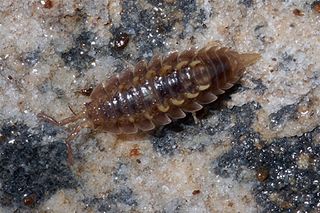
Deto echinata, the horned isopod, is a species of air-breathing isopod, or woodlouse, in the family Detonidae. It inhabits seashores in southern Africa and on some oceanic islands.
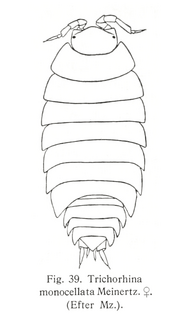
Trichorhina tomentosa, known informally as the dwarf white isopod, is a species of woodlouse in the family Platyarthridae. It is a parthenogenetic species, and only female individuals are known. Native to tropical regions throughout the Americas, dwarf white isopods have been introduced to other tropical regions worldwide.















